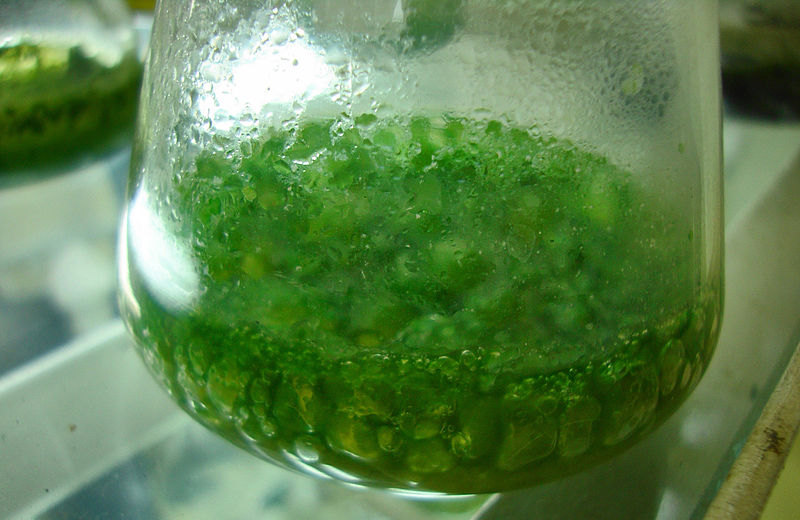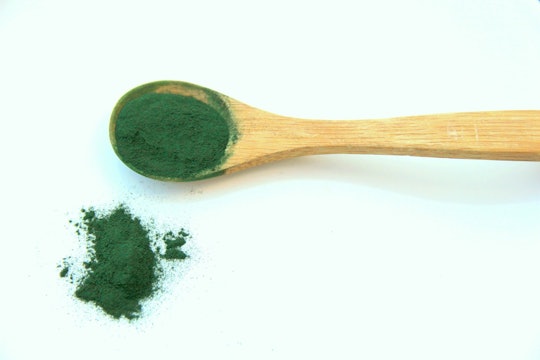Buyer, beware — cyanobacteria toxins in supplements are a serious health risk
Dietary supplements made with blue-green algae also contain their toxins
While out shopping, my partner noticed a bottle of shampoo that contained "blue-green algae", a colloquial name for what are actually cyanobacteria, a group of bacteria that growth via photosynthesis. She showed me the shampoo, expecting an amused chuckle or excited grin, because the organisms were the topic of my research. I didn't chuckle or grin: cyanobacteria are notorious for making toxins.
There are a wide variety of different cyanotoxins (a toxin made by cyanobacteria) that can harm humans, wildlife, and livestock. Cyanotoxins can be very potent. Some have toxicities that are comparable to, or in some cases more potent than, cyanide. Symptoms of cyanotoxin intoxication in humans and other mammals include salivation, incontinence, muscle tremors, paralysis, and respiratory failure for the neurotoxins anatoxin and saxitoxin and vomiting, lethargy, abdominal pain, and internal bleeding for the microcystin liver toxins. Many toxin-producing cyanobacteria grow to form large, harmful blooms that can shut down municipal drinking water supplies when their toxins contaminate drinking water.
But it's not just shampoo. Some kombucha also contain cyanobacteria, and cyanobacteria are legally sold as dietary supplements, where they are marketed as "super foods" that are high in vitamins and protein. These "blue-green algae" products are both popular and profitable. The global algae protein market was valued at approximately $703 million in 2019, and cyanobacteria protein alone accounted for over 40 percent of this market value.

Cyanobacteria cultured in a lab
Joydeep on Wikimedia Commons (CC BY-SA 3.0)
The ability to produce toxins varies widely between species. Primarily three types of cyanobacteria are sold as dietary supplements or in beauty products: Arthrospira platensis, Arthrospira maxima, and Aphanizomenon flos-aquae. Due to an old naming convention, Arthrospira species are typically marketed and sold as "Spirulina." They have a long history as a food source for humans and are generally recognized as nontoxic and safe. Commercial Arthrospira is grown in outdoor, industrial ponds designed to selectively maintain near monocultures of Arthrospira and avoid the growth of toxic cyanobacteria. However, maintenance problems do occur, and cyanotoxins have been detected in some Spirulina products, which indicates that industrial ponds sometimes become contaminated with toxic cyanobacteria species.
In contrast to the Arthrospira species used to make Spirulina supplements, Aphanizomenon flos-aquae (the organism used in the shampoo), produces neurotoxins. Aphanizomenon species used in dietary supplements are harvested from the wild, a trait that manufacturers often flaunt in their product descriptions. Since the 1980s, nearly all commercially available Aphanizomenon flos-aquae is harvested from Upper Klamath Lake in Oregon, USA, where dense cyanobacteria blooms regularly occur. Because of this, Aphanizomenon supplements are sometimes marketed as “Klamath Lake algae.”
Since it is wild-harvested, the source material used for Aphanizomenon supplements always contains a complex mixture of cyanobacteria species that changes over time and with conditions at the collection site. So, supplement manufacturers have less control over the types of cyanobacteria that are included, which increases the risk of cyanotoxin exposure from taking Aphanizomenon supplements.
Although there is inconclusive evidence that the Aphanizomenon species that grow in Upper Klamath Lake produce neurotoxins, microcystins have been regularly detected in Upper Klamath Lake, and the state of Oregon has issued toxicity warnings for the area in the past, which supports a legitimate concern for the ingestion of cyanotoxins in Klamath Lake algae supplements. In fact, one study showed that dietary supplements made with Klamath Lake algae can contain concentrations of microcystins up to 60 times higher than safety standards set by Oregon state. Some Klamath Lake algae products have microcystin levels that can surpass safe levels for drinking water set by the World Health Organization by up to 683 percent. Klamath Lake algae supplements showed toxic effects in human cells and arthropods, and reports of acute toxicity linked to cyanotoxins in dietary supplements exist for both dogs and humans. And, even low levels of microcystins may increase the risk of developing liver cancer.
However, the true risk of toxicity when using cyanobacteria supplements is hard to estimate because there is a large amount of variation in the amount of cyanotoxins measured from lot to lot, and many supplement manufacturers do not provide suggested doses on their product packaging. Therefore, the amount of cyanotoxin consumed in dietary supplements is likely highly variable between products. Even the low levels of cyanotoxin measured in some contaminated Spirulina products may be a concern if product packaging gives consumers the green light to consume as much as desired or when cyanobacteria supplements are consistently used.
Despite the risks to people who take cyanotoxins, current dietary supplement regulations are not adequate to protect consumers. In the United States, dietary ingredients and supplements are regulated by the Dietary Supplement Health and Education Act of 1994, an amendment to the Federal Food, Drug, and Cosmetic (FD&C) Act. Under these rules, products legally marketed before 1994 are "grandfathered" into safe status, which includes Spirulina products. This means that no pre-market evaluation or organized clinical dose-escalation studies for Spirulina-based supplements are required by US law.
The US Food and Drug Administration (FDA) still requires that dietary supplement manufacturers follow current good manufacturing practices, and reporting of adverse effects is required by law. But these do not prevent cyanotoxin contaminated products from reaching store shelves. The US Pharmacopeial Convention (USP), an official FDA-recognized organization that sets standards for dietary supplements and food ingredients, has safety standards for Spirulina products. However, under the FD&C act, compliance with USP is strictly voluntary for dietary supplements – meaning that USP standards are not guaranteed unless the product packaging is labeled as "USP verified". And because USP quality standards only exist for Spirulina products, Aphanizomenon supplements (which are more likely to contain harmful toxins) have the least regulatory oversight.
Despite all the risks involved in taking cyanobacteria supplements, one would think there must be some genuine health benefits that consumers can weigh against intoxication risks when considering supplementing their diets with cyanobacteria. Supplement product labels tout the nutritional and medicinal benefits of both Aphanizomenon and Spirulina, which includes statements such as high protein and antioxidant content, lowering blood pressure and cholesterol, aiding blood sugar control, retaining hair moisture, and improving muscle strength and endurance. Research has little to say about cyanobacteria supplements' effects on hair, but a recent review of 25 clinical trials with cyanobacteria supplements showed some potential in reducing oxidative stress, improving cholesterol content, and reducing blood sugar. However, the same study found that most of the clinical trials reviewed did not meet typical quality standards; studies without double-blinding had to be included in order to have enough literature to review.
The Natural Medicines Comprehensive Database, which is maintained by the US National Institutes of Health, states that there is insufficient evidence to determine the effectiveness of blue-green algae supplements for nutrition and to treat most diseases. In fact, the only condition these supplements are rated "possibly effective" for is high blood pressure. The purported health benefits are simply a marketing gimmick.
In short, there is little or no health and nutritional rewards for consuming cyanobacteria that offset the real and concerning risk of cyanotoxin exposure. Ideally, consumers should avoid ingesting cyanobacteria all together, but consumers interested in a diet that includes cyanobacteria can take precautions to ensure they do so safely. Read the product labels, and avoid all products made with Aphanizomenon or Klamath Lake algae. Stick to purchasing pure Spirulina products from companies that are USP verified and willing to publish data on cyanotoxin content, so that you can make informed decisions about safe dosing.

